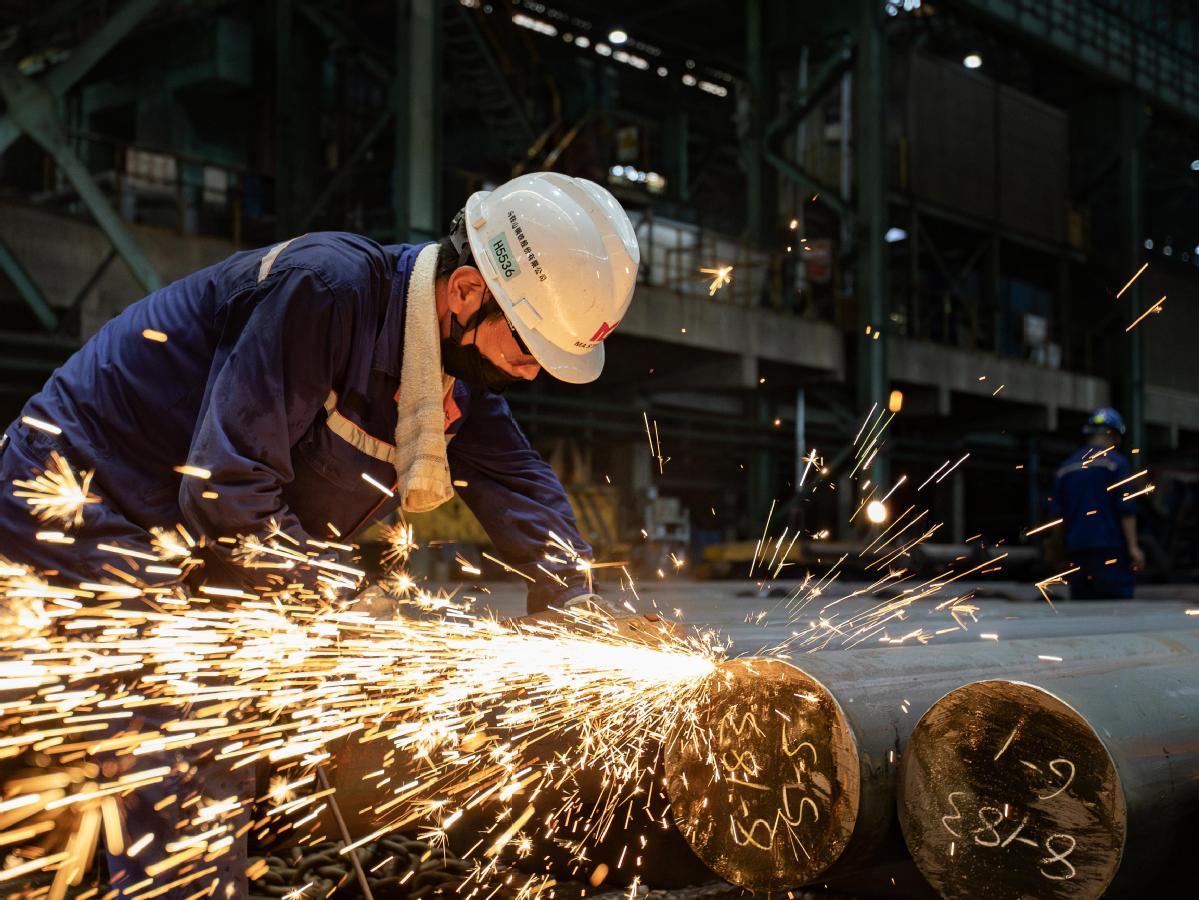Rising demand speeds up steel industry's recast
China Daily, September 05, 2024 Adjust font size:

Structural adjustment in China's steel industry is accelerating to meet rising demand for steel from the automotive, shipbuilding and home appliance industries as well as emerging sectors like wind and solar power, said the China Iron and Steel Association recently.
Latest data from the association showed that the proportion of steel used in manufacturing had increased from 42 percent in 2020 to 48 percent in 2023, with a further uptrend observed this year.
From January to July, production of long products fell year-on-year, with rebar down by 13.4 percent and wire rods down by 2.9 percent. In contrast, production of flat products continued to grow, with hot-rolled wide steel strips up by 10.6 percent and cold-rolled wide steel strips up by 14.4 percent.
"We see a shift in the product portfolio from long steel for construction to flat steel for transportation and machinery. This requires higher quality production. At the same time, decarbonization is driving big investments in cleaner production routes, scrap collection and upgrading, as well as access to renewable energy," said Karel Eloot, senior partner at McKinsey & Company.
"All of this provides great opportunities for local and foreign companies in the broader steel ecosystem to collaborate and to bring innovative solutions to build a more sustainable and stronger steel value chain," he said.
China is the world's largest steel producer and consumer, according to the CISA. In 2023, China's steel output reached 1.019 billion metric tons, accounting for about 54 percent of global production, while its consumption of steel represented about 51 percent of the global total.
Yao Lin, chairman of the CISA, said: "Green and low-carbon initiatives are the primary focus for the steel industry's transformation and upgrade. By the end of June, 140 steel enterprises with over 600 million tons of crude steel capacity had completed or partially completed ultra-low emission transformations and passed our evaluations. The average investment per ton of steel for these transformations was approximately 466.36 yuan ($65.5)."
Experts said that there is still a significant demand gap for high-performance electrical steel and steel products with high strength, high toughness and high corrosion resistance. Further technological innovation is needed to support the steel industry's high-quality development.
"More efforts are also needed to leverage new technologies such as intelligent scheduling and resource optimization based on industrial internet, and full-process quality analysis and optimization based on big data, to create a highly efficient, clean, low-carbon, circular, green and intelligent manufacturing system," Yao said.
Wang Xiangwei, a director of procurement at Chinese carmaker FAW Group, said that with the development of the new energy vehicle industry, demand for high-performance electrical steel and structural steel materials will increase accordingly. Benefiting from the need for improved vehicle safety in NEVs, steel products with high performance and advanced technology also have growth opportunities.
Ma Yunshuang, general manager of CRRC Group, a major railway equipment supplier, stated that in the construction of a modern logistics system, there is an increasing need for steel products that feature characteristics such as lightweight, high strength, high toughness, high corrosion resistance and high environmental resistance.
Gao Xiang, president of China International Marine Containers (Group) Co Ltd, said the company is expected to use nearly 10 million tons of steel for product manufacturing in 2024.
"The steel used will be diverse in types and specifications, with demand for products that can resist high-pressure, low-temperature, corrosion and wear," he said.
"To further accelerate technological innovation to support the steel industry's high-quality development, efforts should focus on building a comprehensive low-carbon technology innovation system, fostering collaboration among universities, research institutes and enterprises, cultivating talent, and facilitating effective transformation of technological achievements," Yao said.